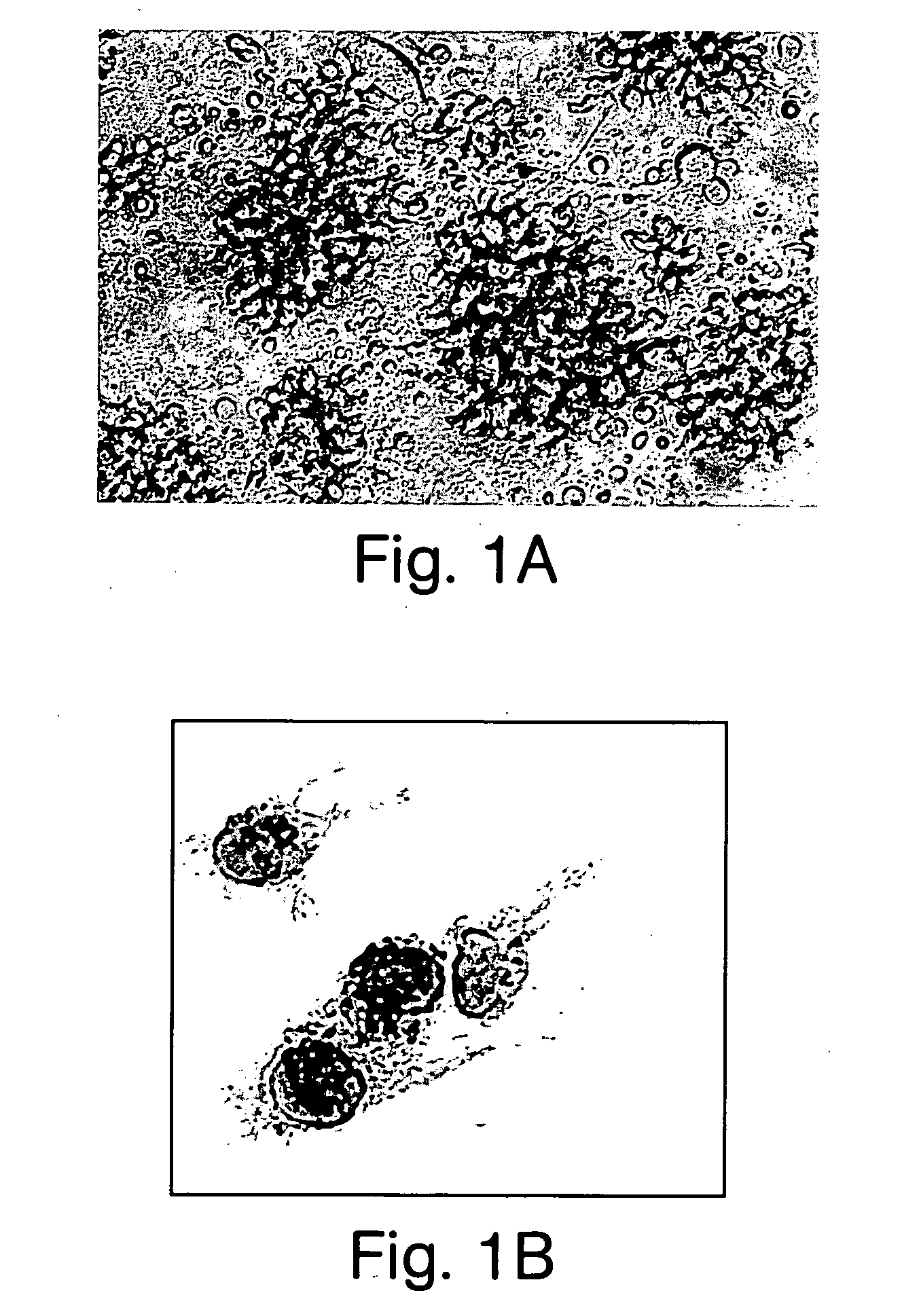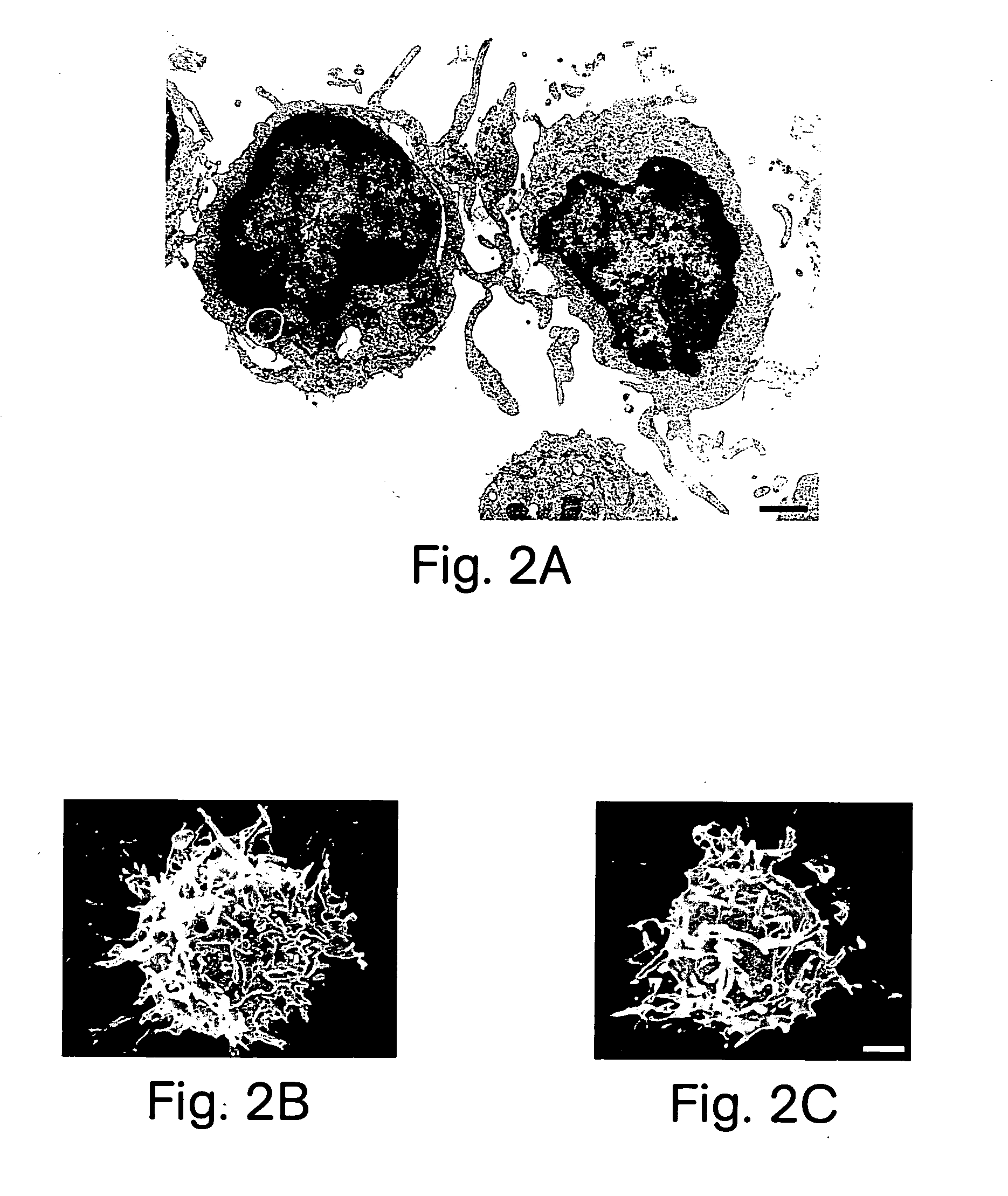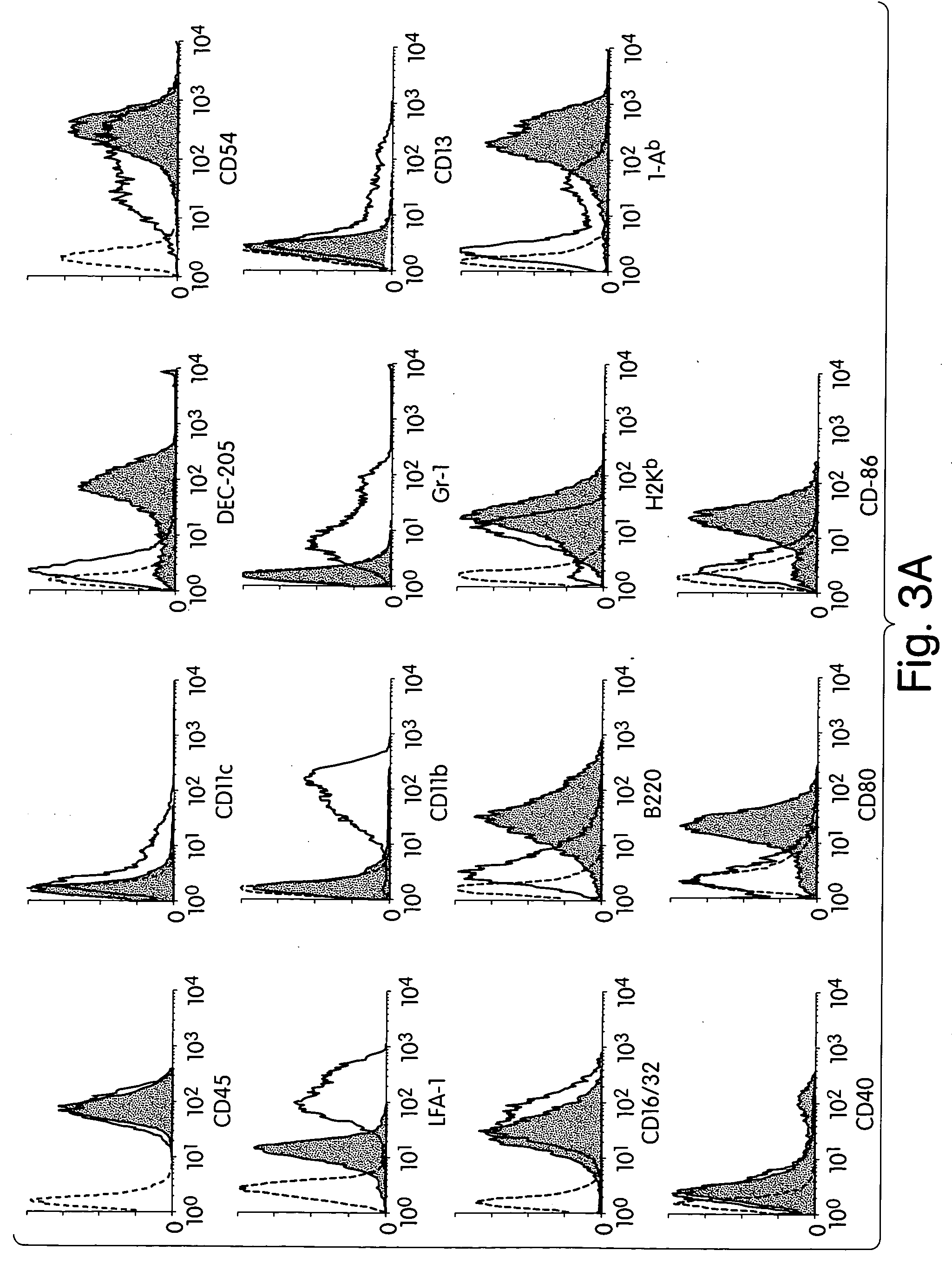Novel tolerogenic dendritic cells and therapeutic uses therefor
a dendritic cell and tolerogenic technology, applied in the field of new tolerogenic dendritic cells and their therapeutic use, can solve the problems of hyperglycemia and its associated pathologies, mature dcs can lose their tolerogenicity, and lose their tolerogenicity
- Summary
- Abstract
- Description
- Claims
- Application Information
AI Technical Summary
Problems solved by technology
Method used
Image
Examples
example 1
Description of DEC205.sup.+B220.sup.+CD19.sup.-Cells from Liver
[0123] Generation of DEC205.sup.+B220.sup.+CD19.sup.-cells from liver NPCs. NPCs were isolated from livers of B10 mice. Approximately 7-8.times.10.sup.6 cells were obtained from each liver, with <5% hepatocyte contamination. An Ab mixture and complement were used to deplete CD4.sup.+, CD8.alpha..sup.+, CD14.sup.+, CD19.sup.-, NK1.1+, and Gr-1.sup.+cells. Cells were then cultured in complete medium containing IL-3 for 3-4 days. FIG. 1A shows that clusters of proliferating cells were noted in the cultures. The addition of anti-CD40 mAb induced the formation of long dendritic process on these cells. Following 3-4 additional days in culture, the cells detached from the adherent clusters. By 6-8 days, .about.3.times.10.sup.6 such cells were obtained from each mouse liver.
[0124] FIG. 1B shows that, morphologically, the cells displayed characteristics of DC, including irregular-shaped eccentric nuclei, a paucity of prominent cy...
example 2
Effects of Liver-derived DEC205.sup.+B220.sup.+CD19.sup.-Cells on Immune Function
[0129] Allostimulatory capacity of liver-derived DEC205.sup.+B220.sup.+CD1-9.sup.-cells. The allostimulatory capacity of DEC205.sup.+, B220.sup.+, CD19.sup.-cells derived from B 10 liver NPCs was determined in a one-way MLR, performed as described above. Mature mycloid DCs (BM IL-4 DCs) stimulated vigorous allogeneic T cell proliferation, whereas liver-derived DEC.sup.+B220.sup.+CD19.sup.-cells induced very little T cell proliferation, as determined by thymidine uptake. FIG. 5A shows that the allostimulatory capacity was similar to that seen with immature myeloid DCs propagated from liver in response to GM-CSF (liver GM-CSF DCs) (Lu et al., 1994, J. Exp. Med. 179:1823-1834). Low T cell proliferation after stimulation by liver GM-CSF DCs was expected due to low expression of MHC and costimulatory molecules, as shown in FIG. 3A (Lu et al., 1994, J. Exp. Med. 179:1823-1834). However, FIG. 3A also shows tha...
example 3
Effects of DEC205.sup.+B220.sup.+CD19.sup.-cells on T cell differentiation
[0132] Liver-derived DEC205.sup.+B.sup.+CD19.sup.-cells induce Tr differentiation. T cell differentiation following interaction with various subsets of allogeneic DCs was determined by measuring cytokine levels in the supernatants of 2- to 4-day MLR by ELISA. T cells cultured with BM IL-4 DCs (mature myeloid DCs) from mouse secreted typical Th1 cytokines, including IFN-.gamma. and IL-2, as shown in FIG. 7A. T cells stimulated by liver GM-CSF DCs (immature myeloid DCs) from mouse produced TGF-.beta., with only low levels of IL-2, IL-4, and IL-10, and no IFN-.gamma., a profile consistent with Th3 differentiation (Inobe et al., 1998, Eur. J. Immunol. 28:2780-2790). In contrast, T cells were driven by liver-derived DEC205.sup.+B220.sup.+CD19.sup.-cells from mouse to release large amounts of IL-10 and IFN-.gamma., moderate amounts of TGF-.beta., and very little IL-2 or IL-4. Such a cytokine profile resembles that o...
PUM
| Property | Measurement | Unit |
|---|---|---|
| time | aaaaa | aaaaa |
| concentration | aaaaa | aaaaa |
| concentration | aaaaa | aaaaa |
Abstract
Description
Claims
Application Information
 Login to View More
Login to View More - R&D
- Intellectual Property
- Life Sciences
- Materials
- Tech Scout
- Unparalleled Data Quality
- Higher Quality Content
- 60% Fewer Hallucinations
Browse by: Latest US Patents, China's latest patents, Technical Efficacy Thesaurus, Application Domain, Technology Topic, Popular Technical Reports.
© 2025 PatSnap. All rights reserved.Legal|Privacy policy|Modern Slavery Act Transparency Statement|Sitemap|About US| Contact US: help@patsnap.com



